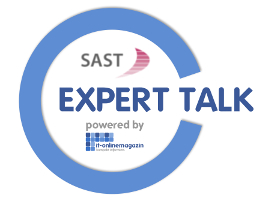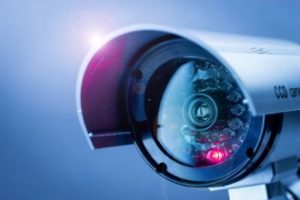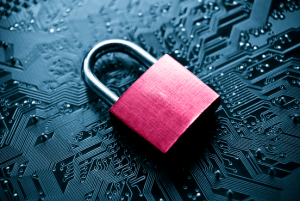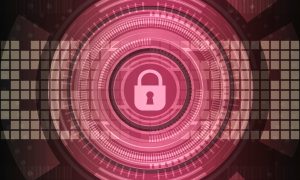 Companies that use SAP software, as well as the German-speaking SAP User Group (DSAG), are demanding security dashboards to provide for greater transparency and indicate necessary activities. The most critical risks, however, are those that arise as a combination of other events, which are not critical in and of themselves. After all, even the best dashboards aren’t able to display this kind of unidentified security incident.
Companies that use SAP software, as well as the German-speaking SAP User Group (DSAG), are demanding security dashboards to provide for greater transparency and indicate necessary activities. The most critical risks, however, are those that arise as a combination of other events, which are not critical in and of themselves. After all, even the best dashboards aren’t able to display this kind of unidentified security incident.
Security Monitoring
Why your SAP security and compliance strategy can’t wait for an SAP S/4HANA migration
 Companies have been sensitized to the risks: According to a recent report by consulting firm Ernst & Young, 97 percent of the surveyed executives expect that they will face an even greater risk of cyberattacks and data leaks in the future. And they also know that they can hardly keep up with the rapid advances. That’s why we recommend that you give thought to end-to-end protection of your SAP systems now – no matter whether you’re still using SAP ERP or have already migrated to SAP S/4HANA. The sooner you start with an end-to-end strategy, the better you’ll protect yourself against threats – both internal and external.
Companies have been sensitized to the risks: According to a recent report by consulting firm Ernst & Young, 97 percent of the surveyed executives expect that they will face an even greater risk of cyberattacks and data leaks in the future. And they also know that they can hardly keep up with the rapid advances. That’s why we recommend that you give thought to end-to-end protection of your SAP systems now – no matter whether you’re still using SAP ERP or have already migrated to SAP S/4HANA. The sooner you start with an end-to-end strategy, the better you’ll protect yourself against threats – both internal and external.
Don’t lose track of the big picture – a security dashboard provides transparency for all your SAP systems
 The lack of SAP security management dashboards is discussed often by the Security & Vulnerability Working Group at DSAG, the German-speaking SAP User Group. The Working Group sees such tools an essential prerequisite for developing and monitoring the improved security concepts that are urgently needed. Yet a majority of companies has yet to implement the dashboard technology although now would be a particularly good time to implement this efficient tool for mitigating attacks in light of the increasing threat level posed by malware and ransomware.
The lack of SAP security management dashboards is discussed often by the Security & Vulnerability Working Group at DSAG, the German-speaking SAP User Group. The Working Group sees such tools an essential prerequisite for developing and monitoring the improved security concepts that are urgently needed. Yet a majority of companies has yet to implement the dashboard technology although now would be a particularly good time to implement this efficient tool for mitigating attacks in light of the increasing threat level posed by malware and ransomware.
Monitoring SAP system settings centrally – how LINDE keeps an eye on all its SAP systems simultaneously
 Incorrect parameter settings in the SAP system, operating system, or database often result in serious security deficiencies. Numerous companies using a central auditing policy developed as a document are up against the same challenges. Typically, parameter values are compared manually with the target requirements, which of course is time consuming. This a lot of effort even just for one single system. As you might imagine, making the comparisons on system-landscape level is that much more complicated. By centralizing monitoring with an automated solution, you can use resources more efficiently while boosting your IT security.
Incorrect parameter settings in the SAP system, operating system, or database often result in serious security deficiencies. Numerous companies using a central auditing policy developed as a document are up against the same challenges. Typically, parameter values are compared manually with the target requirements, which of course is time consuming. This a lot of effort even just for one single system. As you might imagine, making the comparisons on system-landscape level is that much more complicated. By centralizing monitoring with an automated solution, you can use resources more efficiently while boosting your IT security.
The importance of reliably monitoring transactions in SAP systems
 SAP systems contain numerous transactions that enable applications to be accessed quickly. However, transactions can also be used to access sensitive business processes and confidential information. This is why events relevant to security have to be filtered out of a sea of data and placed in the proper context. This means that in order to evaluate and analyze conspicuous events, intelligent management is required.
SAP systems contain numerous transactions that enable applications to be accessed quickly. However, transactions can also be used to access sensitive business processes and confidential information. This is why events relevant to security have to be filtered out of a sea of data and placed in the proper context. This means that in order to evaluate and analyze conspicuous events, intelligent management is required.
Rent an admin: with our SAST Managed Services we can guarantee the security of your SAP systems in these times of crisis
 The current situation is forcing companies around the world to find and implement alternative solutions to maintain operations of their SAP systems and business processes. The SAST team is your reliable partner, especially in times of crisis. This is because providing remote support for our SAP customers what we do every day. Our SAST Managed Service puts us in the best possible and reliable position to help you in times of crisis!
The current situation is forcing companies around the world to find and implement alternative solutions to maintain operations of their SAP systems and business processes. The SAST team is your reliable partner, especially in times of crisis. This is because providing remote support for our SAP customers what we do every day. Our SAST Managed Service puts us in the best possible and reliable position to help you in times of crisis!
SAP Security Audit Log – recommendations for optimal monitoring
 The Security Audit Log allows users with extensive authorizations to be monitored. This is particularly useful for ensuring compliance with both internal security policies and external legal requirements. The SAP standard tool gives an overview of critical activities relevant to security and logs them.
The Security Audit Log allows users with extensive authorizations to be monitored. This is particularly useful for ensuring compliance with both internal security policies and external legal requirements. The SAP standard tool gives an overview of critical activities relevant to security and logs them.
SNC encryption made easy: SAP security even without SSO
 To secure and encrypt customer networks, SAP offers the SNC (Secure Network Communications) interface with which users can log in to SAP systems without having to enter a user name or password. In the standard system, SAP login credentials are transmitted in clear text. The SNC interface routes calls through the SAP Cryptographic Library, to encrypt all communications between the SAP GUI and the SAP server. This enables secure individual logins for SAP.
To secure and encrypt customer networks, SAP offers the SNC (Secure Network Communications) interface with which users can log in to SAP systems without having to enter a user name or password. In the standard system, SAP login credentials are transmitted in clear text. The SNC interface routes calls through the SAP Cryptographic Library, to encrypt all communications between the SAP GUI and the SAP server. This enables secure individual logins for SAP.
SAP Application Server Encryption via TLS
 To achieve the most comprehensive protection possible against potential attacks in SAP environments (and deal with those that do occur), encryption mechanisms and up-to-date cryptography libraries are required using TLS.
To achieve the most comprehensive protection possible against potential attacks in SAP environments (and deal with those that do occur), encryption mechanisms and up-to-date cryptography libraries are required using TLS.
One step at a time: How to secure and harden your SAP Gateway
 The Gateway is a central communication component of an SAP system. As such, it is an attractive target for hacker attacks – and should receive corresponding protections. If the Gateway protections fall short, hacking it becomes child’s play. Despite this, system interfaces are often left out when securing IT systems. Should a cyberattack occur, this will give the perpetrators direct access to your sensitive SAP systems.
The Gateway is a central communication component of an SAP system. As such, it is an attractive target for hacker attacks – and should receive corresponding protections. If the Gateway protections fall short, hacking it becomes child’s play. Despite this, system interfaces are often left out when securing IT systems. Should a cyberattack occur, this will give the perpetrators direct access to your sensitive SAP systems.

